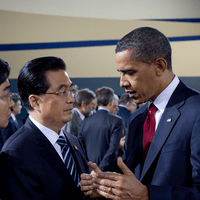Under what circumstances could the United States and China go to war? A recently released RAND report (.pdf) examined this question and unsurprisingly concluded that war between the two countries was improbable, even while identifying North Korea and Taiwan as the two most likely flashpoints. The report found that a war with China was improbable because the costs in any scenario would be virtually incalculable, in large part because it might induce a global financial collapse. Nevertheless, U.S. and Chinese military strategists will continue long-term planning for war scenarios against one another, with a time horizon of up to 50 years. Given this distant timeframe, it is worth asking, “What mistakes are we making now that could lead to war later?”
Accidental wars are rare. Mistakes can trigger wars, but most often the combatants have spent a great deal of time thinking about the prospect of war -- and preparing for it. Though triggered by the murder of Archduke Franz Ferdinand in 1914, for example, World War I had already been carefully mapped out by all the major combatants long beforehand. It’s worth noting, too, that mistakes don’t always trigger wars, even those that have been planned for. The downing of KAL 007 by the Soviet Union in 1983, for example, failed to bring the U.S. and the Soviet Union to conflict, even as it ratcheted up tensions.
But nations don’t always expect war, either. Wars generally involve a degree of miscalculation, at least by one side, otherwise the parties would recognize the respective power balances and resolve the dispute without engaging in hostilities. The authors of the RAND report are correct to observe that war between the U.S. and China would probably result from a long-term series of miscalculations and misunderstandings, potentially ignited by a sudden change in circumstances. However, misperceptions might also affect long-term U.S. and Chinese policy in ways that make war in the future much more likely.

